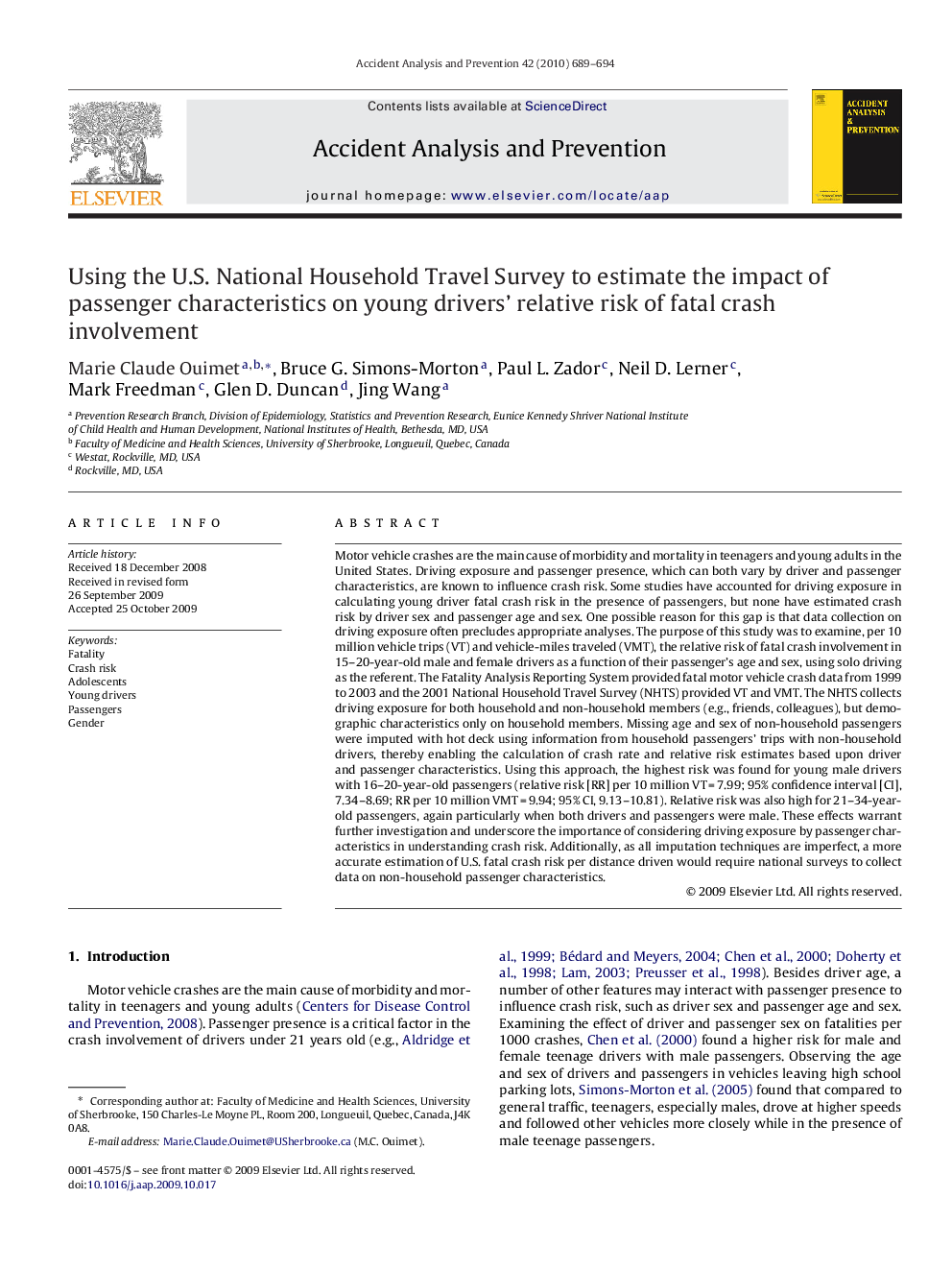| کد مقاله | کد نشریه | سال انتشار | مقاله انگلیسی | نسخه تمام متن |
|---|---|---|---|---|
| 572970 | 877386 | 2010 | 6 صفحه PDF | دانلود رایگان |

Motor vehicle crashes are the main cause of morbidity and mortality in teenagers and young adults in the United States. Driving exposure and passenger presence, which can both vary by driver and passenger characteristics, are known to influence crash risk. Some studies have accounted for driving exposure in calculating young driver fatal crash risk in the presence of passengers, but none have estimated crash risk by driver sex and passenger age and sex. One possible reason for this gap is that data collection on driving exposure often precludes appropriate analyses. The purpose of this study was to examine, per 10 million vehicle trips (VT) and vehicle-miles traveled (VMT), the relative risk of fatal crash involvement in 15–20-year-old male and female drivers as a function of their passenger's age and sex, using solo driving as the referent. The Fatality Analysis Reporting System provided fatal motor vehicle crash data from 1999 to 2003 and the 2001 National Household Travel Survey (NHTS) provided VT and VMT. The NHTS collects driving exposure for both household and non-household members (e.g., friends, colleagues), but demographic characteristics only on household members. Missing age and sex of non-household passengers were imputed with hot deck using information from household passengers’ trips with non-household drivers, thereby enabling the calculation of crash rate and relative risk estimates based upon driver and passenger characteristics. Using this approach, the highest risk was found for young male drivers with 16–20-year-old passengers (relative risk [RR] per 10 million VT = 7.99; 95% confidence interval [CI], 7.34–8.69; RR per 10 million VMT = 9.94; 95% CI, 9.13–10.81). Relative risk was also high for 21–34-year-old passengers, again particularly when both drivers and passengers were male. These effects warrant further investigation and underscore the importance of considering driving exposure by passenger characteristics in understanding crash risk. Additionally, as all imputation techniques are imperfect, a more accurate estimation of U.S. fatal crash risk per distance driven would require national surveys to collect data on non-household passenger characteristics.
Journal: Accident Analysis & Prevention - Volume 42, Issue 2, March 2010, Pages 689–694